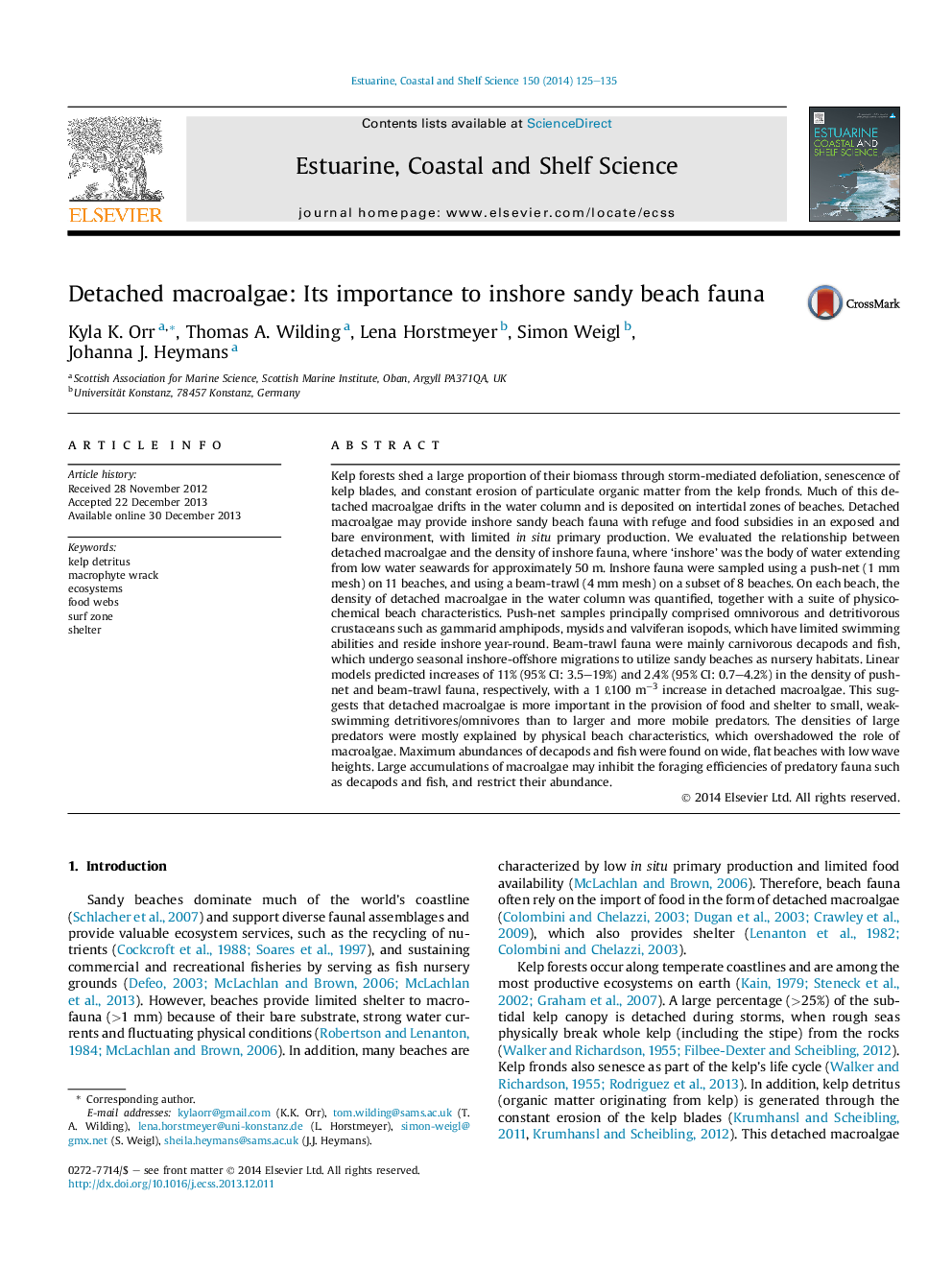| کد مقاله | کد نشریه | سال انتشار | مقاله انگلیسی | نسخه تمام متن |
|---|---|---|---|---|
| 4539656 | 1326616 | 2014 | 11 صفحه PDF | دانلود رایگان |
Kelp forests shed a large proportion of their biomass through storm-mediated defoliation, senescence of kelp blades, and constant erosion of particulate organic matter from the kelp fronds. Much of this detached macroalgae drifts in the water column and is deposited on intertidal zones of beaches. Detached macroalgae may provide inshore sandy beach fauna with refuge and food subsidies in an exposed and bare environment, with limited in situ primary production. We evaluated the relationship between detached macroalgae and the density of inshore fauna, where ‘inshore’ was the body of water extending from low water seawards for approximately 50 m. Inshore fauna were sampled using a push-net (1 mm mesh) on 11 beaches, and using a beam-trawl (4 mm mesh) on a subset of 8 beaches. On each beach, the density of detached macroalgae in the water column was quantified, together with a suite of physico-chemical beach characteristics. Push-net samples principally comprised omnivorous and detritivorous crustaceans such as gammarid amphipods, mysids and valviferan isopods, which have limited swimming abilities and reside inshore year-round. Beam-trawl fauna were mainly carnivorous decapods and fish, which undergo seasonal inshore-offshore migrations to utilize sandy beaches as nursery habitats. Linear models predicted increases of 11% (95% CI: 3.5–19%) and 2.4% (95% CI: 0.7–4.2%) in the density of push-net and beam-trawl fauna, respectively, with a 1 ℓ.100 m−3 increase in detached macroalgae. This suggests that detached macroalgae is more important in the provision of food and shelter to small, weak-swimming detritivores/omnivores than to larger and more mobile predators. The densities of large predators were mostly explained by physical beach characteristics, which overshadowed the role of macroalgae. Maximum abundances of decapods and fish were found on wide, flat beaches with low wave heights. Large accumulations of macroalgae may inhibit the foraging efficiencies of predatory fauna such as decapods and fish, and restrict their abundance.
Journal: Estuarine, Coastal and Shelf Science - Volume 150, Part A, 5 October 2014, Pages 125–135
